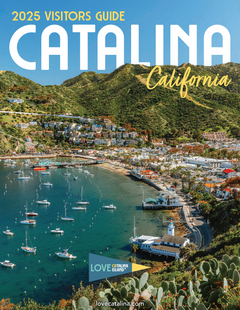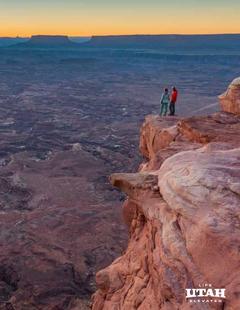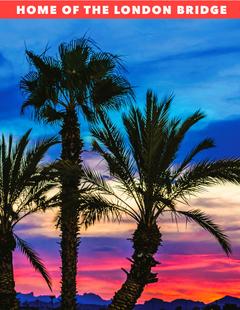Basics
- Length:
- 287 miles (461 km)
- Time:
- Plan for 5 to 6 hours to tour this byway.
- Fees:
- There are no tolls or fees to travel along this road.
Description
One of the best ways to experience Nevada is to travel Highway 50 -- the so-called "Loneliest Road in America." Highway 50 roughly parallels the Pony Express Trail, which goes from Silver Springs through Fallon and along the towns across Highway 50. Remnants of the Pony Express Route are visible for much of the way. Stretching the width of Nevada, Highway 50 is a fascinating scenic and historic corridor through a land seemingly untouched by man. The road travels through snow-mantled mountains that reach summits of more than 11,000 feet.
Far from lonely, Highway 50 actually has a number of attractions that make traveling the byway a worthwhile trip. Many ghost towns and historical cemeteries dot the area. Fishing abounds at Iliapah Reservoir, Cave Lake State Park, and Comins Lake. Travelers will not want to miss the variety of unusual sites such as the Charcoal Ovens State Park or Hickison Summit Petroglyphs. Beautiful historic mining towns are scattered across the byway. Visitors can also pick up a free survival kit at various locations in every town. After completing the survival kit, travelers may receive a survival certificate, a Route 50 lapel pin, and a bumper sticker announcing that they have survived this "uninteresting and empty" road.
Points of Interest
Points of Interest Along The Way
Austin (NV)
Austin was once one of Nevada's largest and richest mining communities. It is now one of the best unreconstructed mining camps and offers travelers a glimpse of its once rich past. For example, visitors may wish to view Stokes Castle, located at the west end of town on a steep dirt road. The "castle" was built to resemble aRoman tower and is very odd architecturally. It was used for only a short time as a summer home.
Located on the other end of town is the Gridley Store. Built in 1863, the store was operated by a group that included Reuel C. Gridley. Mr. Gridley is best remembered for losing a bet and having to carry a sack of flour from one end of town to the other. He auctioned the sack a number of times, raising money for the Sanitary Fund, a Civil War forerunner of the Red Cross. Austin also houses a variety of churches, including St. George's Episcopal Church, consecrated in 1878; St. Augustine's Catholic Church, built in 1866; and the Methodist Church, consecrated in 1866.
Directions
Austin is located near the center of the byway.
Carson City (NV)
Traveling near several of Nevada's byways will bring travelers to Carson City, Nevada's capital. This city is scenic in its own right, as it brings Nevada's history to light with its historic buildings and streets. Visitors will see the Nevada State Capitol building with its sandstone and Alaskan marble and experience sights from the past in museums and the Native American culture that was once prevalent in the area.
Directions
Located at the very western end of the byway.
Copper Mines, "Glory Holes" (NV)
Directions
The Ruth Open Pit Copper Mines are located just east of Ely. Open pit mines like these are called "glory holes" in miner's slang. These particular ones produced nearly one billion dollars in copper, gold, and silver during the first half of the 1900s. The huge mounds that remain visible are waste rock removed to uncover the ore.
Eureka (NV)
Visitors to Eureka will enjoy the numerous opportunities to investigate the captivating streets of a 19th century mining town rife with historic sites. One of these sites a visitor will not want to miss is the Eureka Courthouse, located on Main Street. It is an imposing red brick building that was built in 1879 and was restored only a few years ago. Many famous trials took place in the courtroom that visitors enjoy exploring.
Another building with historic significance is the Eureka Theatre. Located on Main Street as well, the building had its beginnings as a labor union hall in 1879. The union, going on strike, did not have enough funds and sold the unfinished structure, which then became an opera hall. It was later used as a community auditorium, movie house, and dance hall. Eureka contains numerous sites that make stopping in this old mining town an absolute must.
Directions
About 75 miles west of Ely on Highway 50.
Fallon (NV)
Fallon is considered the breadbasket of Nevada because it is one of the state's most agricultural areas. Fallon also contains many of Nevada's oldest and most significant historical and cultural sites. Grimes Point is about 10 miles from Fallon and offers one of the largest exhibit of petroglyphs in Nevada. There is an interpretive trail that leads through the petroglyphs and nearby Hidden Cave. Hidden Cave is an Indian burial ground that has yielded significant archeaological finds.
Also located in Fallon is the Churchill County Museum. The museum is one of the best rural museums in the state and offers good information and displays about the excavations at Hidden Cave.
Directions
Located at the junction of Highway 50 and Highway 95.
Great Basin National Park (NV)
Great Basin National Park was established in 1986 as a tribute to the unique region called the Great Basin in the western United States. Rather than being one large basin as the name implies, the Great Basin is actually a series of tremendous mountain ranges and wide valleys spread out over Nevada, Utah, and portions of California, Oregon, and Idaho. The national park exemplifies many features through spectacular mountain peaks, verdant meadows, pure alpine lakes and crystal streams, mesmerizing caves of limestone, and striking views at every turn.
The park contains 77,100 acres and is home to an incredible range of plant and animal life. The habitats encompassed in this park range from the Piñon-Juniper Life Zone typified by jack rabbits, scrubjays, and sagebrush to the Alpine Life Zone at frigid higher elevations.
The Great Basin National Park offers many recreational opportunities as well. There are several marked trails that take you through various types of scenery. Backpacking and camping are also permitted within specific areas in the park. Five campgrounds are scattered around the park and winter is an amazing time for backcountry skiing.
Directions
The visitor center is located 10 miles south of the byway on State Route 488.
Hickison Petroglyphs (NV)
Hickison Summit is an area that contains rare Indian petroglyphs (prehistoric rock writing). There is a natural pass that lies between two low buttes, which prehistoric aborigines may have used as a site for ambushing migratory deer herds. Cooperative efforts of several familes would have been necessary for successful trapping, killing, and processing the deer. Three petroglyph panels are located at the pass. The petroglyphs suggest connections magical and ritual between the prehistoric aborigines and hunting activities. Petroglyphs were added seasonally by the group's religious leader, or shaman, as omens to insure a successful hunt.
Directions
Located 45 miles west of Eureka. Follow the signs from Highway 50.
Lehman Caves (NV)
The Lehman Caves are one of the most visited attractions in the Great Basin National Park. The caves are among the most highly decorated limestone solution caverns in the western United States. The caves were discovered in 1885 and still contain a variety of unique formations and an array of stalactites and stalagmites that formed over the course of hundreds of thousands of years as water seeped into the caves depositing calcite crystals.
The visitor center offers 90-minute guided tours through Lehman Caves daily. The tour winds along a paved trail for six-tenths of a mile, taking visitors through numerous captivating chambers, including the Gothic Palace, the Cypress Swamp, and the Grand Palace. The temperature in the caves remains low, about 50 degrees, year-round, so warm clothing is recommended.
Directions
Located within the Great Basin National Park, roughly 10 miles south of the byway.
Sand Mountain Recreation Area (NV)
Sand Mountain is located about 25 miles east of Fallon. It is composed of a 600-foot high mound of sand that stretches for two miles. This enormous sand dune was created by sand carried by the wind from the beaches of a prehistoric inland sea that once covered much of Nevada. Sand Mountain is also a recreational area and offers many choices for having fun and learning about plants and animals.
Directions
At the west end of the byway.


















